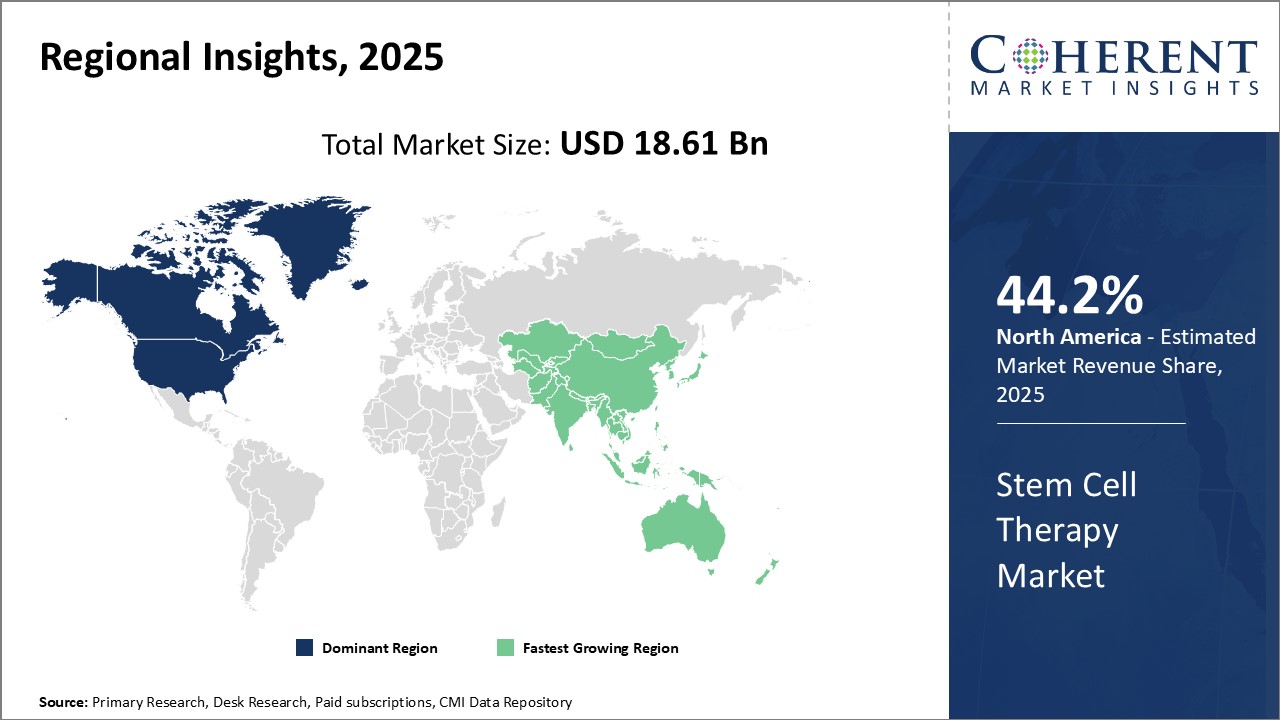
To learn more about this report, Request sample copy
North America remains the dominant region in the global stem cell therapy market and is estimated to hold 44.2% of the market share in 2025. The strong presence of leading biotechnology and pharmaceutical companies in the U.S. has led to significant investments in R&D activities related to stem cell research. Countries like the U.S. and Canada have a highly developed healthcare infrastructure and regulatory framework that encourages clinical trials. This has resulted in the U.S. FDA approving several stem cell therapies for various conditions. The availability of private and public insurance covering stem cell therapy procedures has further increased its adoption in the region.
Asia Pacific region has emerged as the fastest growing market due to factors such as improving healthcare infrastructure, increasing medical tourism and supportive government policies. Countries like China, India, South Korea and Japan are rapidly becoming global hubs for stem cell therapy. These have built state-of-the-art stem cell banks and therapy centers at much lower costs as compared to the developed West. The relatively lower costs have attracted patients from other parts of the world. The rise of medical tourism can also drive the market growth. Patients travel to these countries for affordable stem cell treatments that are not easily accessible or approved in their own countries. Local governments recognize the huge potential, and are offering various incentives to attract private investments and boost domestic production capabilities. South Korea has emerged as a global leader in umbilical cord blood banking. Stringent quality regulations have ensured international accreditation of clinics. The Asia Pacific region thus offers immense opportunities through a unique convergence of advanced healthcare research and affordable delivery of stem cell therapies.
Joining thousands of companies around the world committed to making the Excellent Business Solutions.
View All Our Clients